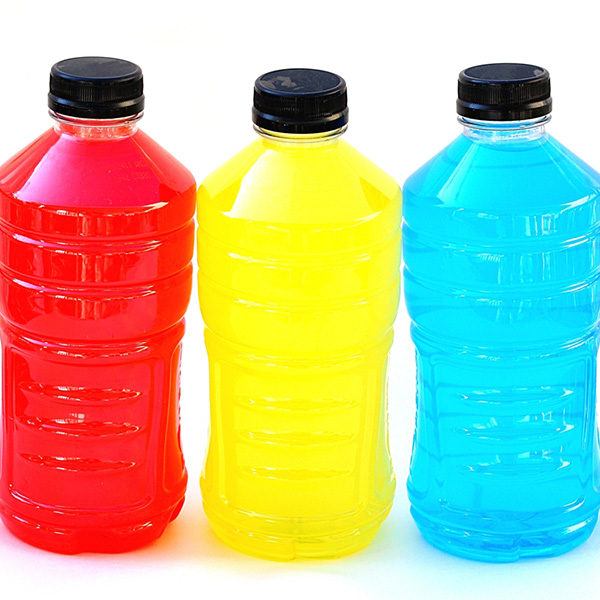Ten “Healthy” Foods that Are Not Healthy
 Sports drinks image via Shutterstock
Sports drinks image via Shutterstock
Food labels can be confusing. We hate to burst your “I’m being healthy” bubble, but between packaging techniques and marketing slogans, it is easy to be fooled into thinking something is good for you, when all it takes is a little reading to figure out that it is not. Don’t just read the packaging hype, flip the product over and read the ingredient list and nutritional information. Here are 10 of the biggest healthy fake-out foods:
1. Organic Frozen Dinners
If it’s organic it must be healthy, right? Wrong. These frozen dinners can pack as many calories and grams of saturated fat as their non-organic counterparts. Plus, you could easily down half a day’s worth of sodium in one frozen dinner, organic or not. Check the label and choose dinners with less than 5 grams of sat fat and 800 mg of sodium.
2. Multi-Grain Bread
Multi-grain bread may sound healthy, but it’s usually made with refined grains, not heart-healthy whole grains. Check the ingredients list on all multi-grain breads before buying. If the first ingredient is “enriched flour” or “bleached flour” then it is refined. Choose breads with the first ingredient listed as whole grain and look for 100 percent whole wheat or other whole grains on the label.
3. Reduced-Fat Peanut Butter
Peanuts are naturally high in good-for-you monounsaturated fat. But when you remove that fat, sugar or trans-fat is usually added in for flavor and texture. Buy the natural versions and enjoy a better tasting, healthier peanut butter.
4. Bran or “Morning Style” Muffins
Bran muffins are usually high in sugar and calories, which makes them a recipe for a mid-morning crash. If you’re craving bran muffins, try making your own at home with this healthier version from Eating Well.
5. Sports Drinks
Unless you’re an endurance athlete, you probably don’t need a sports drink to rehydrate post-workout. A lot of sports drinks contain high fructose corn syrup and most have artificial flavoring. Sports drinks are a sure way to drink back any calories you just burned off in the gym. Usually plain water is perfect to hydrate after a workout and throughout the day.
6. Granola Cereal
Oat and nut clusters with crunch sound healthy, but unfortunately most granola cereal has as much sugar as a candy bar. If you’re hooked on granola in the morning try eating a smaller amount with plain yogurt and fresh fruit. Another way to cut the sugar from your favorite granola cereal is to mix it with a low sugar bran cereal. At the store, choose granola cereals with the least amount of sugar.
7. Energy or Granola Bars
While “energy” makes these bars sound healthy, they are usually packed with added sugar and a hefty amount of calories. Avoid granola and energy bars with sugar near the top of the ingredients list and aim for bars with 200 calories or less.
8. Bottled Green Smoothies
You see them on the grocery store shelves and might think that if it’s green then it must be good for you. Think again. Most commercialized green smoothie drinks are just glorified fruit juice and not packed with the vegetables you would like to believe. Sometimes there are two servings in a bottle, so you can drink 300 calories without taking a breath. If leafy greens are what you crave, try adding spinach to your own smoothie at home or visit a local juice bar like Life Alive in Cambridge or Trident Bookseller’s Cafe on Newbury Street.
9. Instant Oatmeal Packages
These oats are low in fiber and high in added sugar. Pretty much the exact opposite of what you should be eating. Some instant oatmeal can pack up to 16 grams of added sugar. That’s four teaspoons! Try old fashioned oats and add your own brown sugar, cinnamon, and fruit. Or make your own “instant” oatmeal pack by adding oats, sugar, and spices to a plastic bag and bringing it to work for a perfect office snack.
10. Chocolate Soy Milk
Soy milk is an excellent non-dairy source of protein, but you’re better off choosing the original flavor over chocolate to avoid the added sugar. One cup of the average chocolate soy milk can contain 20 grams of sugar or more, and up to 150 calories. Don’t give yourself a free pass with this chocolate milk just because it’s soy.


